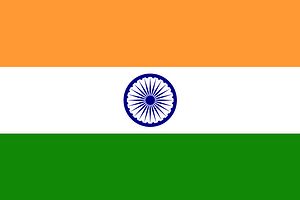In a sliver of good economic news during an Indian election that is widely focused on economic growth, the World Bank announced in a report on Tuesday that India overtook Japan as the world’s third largest economy in terms of purchasing power parity (PPP). According to the World Bank’s International Comparison Program (ICP) data, India holds a 6.4 percent share of global GDP on a PPP basis. The United States remains in first place with a 17.1 percent share and China trails it at 14.9 percent. Japan, while still the world’s third largest economy in nominal terms, holds a 4.8 percent share of global wealth.
The ICP’s data is from 2011. Overall, India went from 10th place in 2005 to 3rd place in 2011. “The United States remained the world’s largest economy, but it was closely followed by China when measured using PPPs. India was now the world’s third largest economy, moving ahead of Japan,” the report noted. “Because economies estimate their GDP at national price levels and in national currencies, those GDPs are not comparable. To be compared, they must be valued at a common price level and expressed in a common currency,” the report explains, outlining the justification for a PPP-based comparative look at world GDPs. In exchange rate terms– that is, when all the national currencies are converted into U.S. dollars at current exchange rates– the Indian economy remains about a third of Japan’s in size, comparable to the Russian or Canadian GDPs.
PPP is particularly important in the study of poverty levels and quality of life across countries as it adjusts for price changes across national economies. PPP, for example, is used by the World Bank in its poverty threshold of $1.25 per day per person. Given that a dollar can buy more in some countries and less in others, PPP-based comparative analyses allow for comparisons between economies. For India, the bad news is that its GDP per captia in PPP terms still ranks the country 127 out 199 — a reminder that the country has much to do in combating poverty. “The largest economies were not the richest, as shown in the ranking of GDP per capita. The middle-in-come economies with large economies also had large populations, setting the stage for continued growth,” the report noted.
The World Bank’s report has been widely featured in the Indian media and is a morale-improving piece of news for a country that has been besieged by high inflation, stagnant growth, corruption, and other economic ills in the past year. Narendra Modi, the Bharatiya Janata Party’s candidate for prime minister in the ongoing election and the front-runner, rose to popularity primarily because voters see him as a candidate capable of transforming India’s economy for the better. Modi has frequently held up his (debatable) economic achievements in his home state of Gujarat, where he was chief minister, and has claimed that he would transfer that model of governance to India as a whole.
































